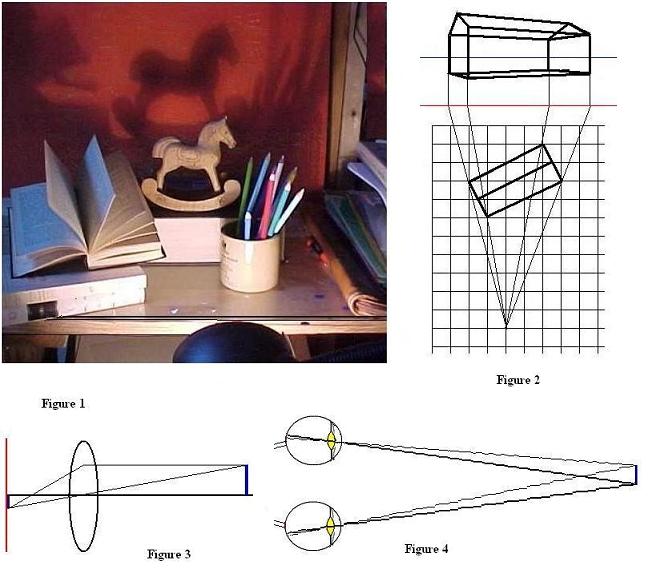
Central projection
Central projection is easiest understood as she shadows of objects produced on a wall by a small light-source (figure 1). The underlying geometrical principles can also be used to transfer a x,y-presentation of a building in a perspective presentation (figure 2).

The same principles underlay the creation of an image produced by a camera, “viewing” a scenery from a central point - the central point of the lens - and projecting it as an inverted image onto the film (figure 3).
Whereas the creation of the image on the retina of the eye follows basically the same principles, the final cerebral image presents a synthesis from the images produced by each eye. For artistic purposes the resulting differences are rarely of relevance, as a scenery pictured with a camera shows mostly little difference in comparison with its direct cerebral perception.
One should keep in mind, that the “linear perspective” is a mathematically defined procedure, applying neither fully to the principles of image-generation of the camera nor fully to that of the human eye.